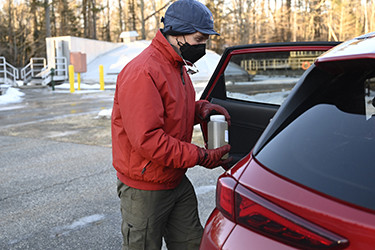The number of workers at local health departments rose 19% in 2022, a new report finds, but the increase may have only been temporary.
Between 2008 and 2019, there were continuous declines in workforce numbers at the nation’s more than 3,300 local health departments, according to the Feb. 20 report from the National Association of County and City Health Officials. In 2019, there were about 153,000 workers at local health departments around the country.
But by 2022, new hirings helped that number soar to 182,000 — a 19% increase, said the “2022 National Profile of Local Health Departments Study” report.
Adriane Casalotti, MPH, MSW, NACCHO’s chief of government and public affairs, said the hirings can be attributed to two needs that increased significantly during the COVID-19 pandemic: data surveillance and emergency preparedness.
“Two areas that really saw particularly large jumps were epidemiologists and statisticians,” Casalotti told The Nation’s Health.
NACCHO data showed that there were about 2,900 such workers in 2019, with the number growing to 4,200 in 2022 — the third year of the ongoing pandemic. The number of dedicated preparedness staff also jumped from 2,300 in 2019 to 4,000 in 2022.
Unfortunately, the much-needed spike is likely temporary, as many of the workers were hired by health departments to work for a brief period. The number of contractual employees at local health departments increased about 175% between 2019 and 2022. Large local health departments, which typically serve more than 500,000 people[ML2] , saw the greatest increases in the number of contractual employees.
With temporary federal COVID-19 funding ending, it will be difficult to support the budgets of local health departments and maintain the same number of hires, Casalotti said. Collaboration between local, state and federal governments will be needed to maintain the new positions.
“There was a huge influx of money into the public health system during the pandemic, as was necessary to do the work of the response and to try and fill some of the gaps that had been made from disinvestment,” Casalotti said. “The question is, in lieu of additional emergency supplemental funding, what type of investments are going to be made for the general health of health departments, their structure and workforce, so that we can benefit from these workers in the long term?”
With emergency funding and employee contracts running out, the NACCHO report said that now is the time to act. Policymakers should create more stable funding programs so that local health departments can continue to employ recently-hired contractual workers.
The new hires, who included community health workers with close connections to residents, bring invaluable insight and experience to the departments they work at, Casalotti said.
“The folks who were in the health department during the pandemic have a wealth of knowledge that is important, not just for whatever the next crisis is, but also for improving how we do things on a day-to-day basis.” Casalotti said.
Among the report’s other findings:
• Seventy percent of local health departments reported that workers were harassed because of pandemic response measures. A majority of those departments said they had no protections from local, state, or federal governments to respond to threats and harassment.
• From 2010 to 2022, the rate of local health departments providing mental health services increased from 40% to 61%. The number of health departments partnering with outside mental health organizations, such as substance abuse providers, increased to 32%.
• Local health departments are significantly digitizing their data. Between 2008 and 2022, electronic health record implementation increased by 42%.
• In 2022, 90% of local health departments served as locations for adults and children to receive routine vaccinations. Ninety-three percent of departments implemented plans to reach unvaccinated and under vaccinated residents.
Photo caption: Epidemiologist Gib Parrish carries a wastewater sample to be tested for Covid-19 in January 2022. The sample was from a wastewater facility in Yarmouth, Maine. (Photo by Shawn Patrick Ouellette/Portland Press Herald via Getty Images)